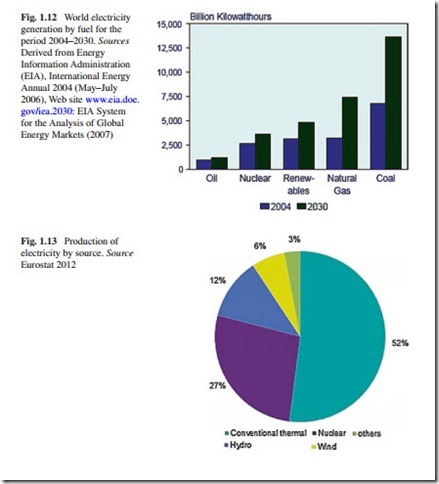The Use of Nuclear Energy for the Generation of Electricity
Since the oil crisis of the 1970s, several European countries understood the urgent need to use nuclear energy for the generation of electricity as much as possible. Other adopts a different position (Table 1.5).
Nuclear technology has been sufficiently used in the 1960s, 1970s, and 1980s due to the construction of hundreds of nuclear power plants in the USA, Canada, Europe, Russia, among others. The EU-28 has the largest number of commercial nuclear power plants in the world: 184 units are in operation in 17 countries, providing around 27 % of the EU’s electricity and 60 % of low-carbon electricity. Although nuclear energy is a proven technology, in some EU member states, it faces uncertainties regarding public acceptance due to risk perception and often also due to lacking implementation of available technical solutions for long-term disposal of nuclear waste. The nuclear accident at Fukushima Daiichi nuclear power plant in Japan in March 2011 further aggravate public acceptance problems in some EU member states, while the possible further increase in safety requirements might affect the competitiveness of existing nuclear generation capacities in EU member states now using nuclear energy for the generation of electricity in a larger scale.
Undoubtedly, nuclear safety is and will remain one of the absolute priorities of the EU. An EC Directive12 establishing the basic framework for nuclear safety adopted in 2009 provides a community framework in order to maintain and promote the continuous improvement of nuclear safety. When this directive is implemented, the EU will be the first major regional nuclear player with common binding nuclear safety rules. On 3 November 2010, the EC also proposed a new directive, which sets safety standards for disposing spent fuel and radioactive waste.
Despite of public concern about the use of nuclear energy for the generation of electricity in some EU member states, it is difficult to foresee the future of Europe without the use of this type of energy source.
In Fig. 1.12, the foresee participation of the different types of energy in electricity generation until 2030, particularly nuclear energy, is clearly reflected.
On the other hand, and according to Fig. 1.13, in 2012, the generation of electricity using fossil fuels was 52 % of the total, following by nuclear energy (27 %), hydropower (12 %), and wind power (6 %). The EU expects that the use of renew- able energy source for the electricity generation target could be reached in 2020.
At the same time, the EU expects also that the use of renewable energy sources for the generation of electricity will continue rising during the coming years to reach 24 % in 2030 and over 25 % (could reach 29 % or even more) in 2050.
